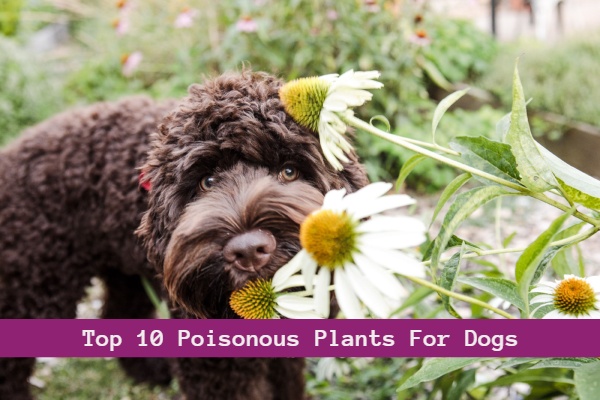Attention all dog owners! It is the responsibility of every pet owner to ensure that our homes are safe havens for our furry friends by keeping them free from poisonous plants and toxins. When designing your garden, consider your dog’s safety, especially the plants that might be toxic to them. Surely, many plants enhance the beauty of your outdoor space, but some of them are pretty dangerous for your fur babies. Your pets don’t know about the plants that are injurious to health. Hence, the safety is in your hands.
The following are the top 10 poisonous plants that are toxic to dogs and need to be avoided in your garden to keep your dog safe.
Rhododendron
Rhododendrons are a popular flowering garden plant blooming from late April to June. Despite their beauty, rhododendrons are very toxic to dogs. The plant contains the harmful chemical grayanotoxin, which will affect the nerve cells and harm the heart and the muscles as well. Every part of the rhododendrons is poisonous to dogs, especially the leaves, though the flowers and nectar are also dangerous. According to the Pet Poison Helpline, ingesting just 0.2% of their body weight can poison your dogs.
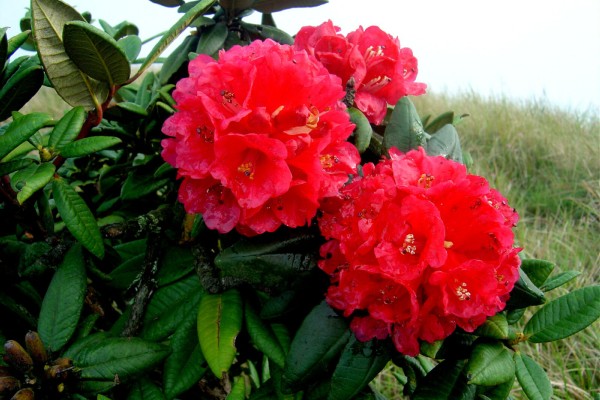
Symptoms of Rhododendron poisoning in dogs:
Rhododendron poisoning symptoms will vary from mild to severe, depending on what part of the plant was eaten and how much. As mentioned above, grayanotoxin disrupts cell function and the symptoms of poisoning include vomiting, diarrhea, stomach pain, and loss of appetite. Symptoms may occur one to three hours after the ingestion of the plant. Similarly, your dong’s size also matters, with smaller dogs and puppies being more affected than larger dogs.
Other serious clinical signs may be changes in heart fluctuation and blood pressure, weakness, tremors, seizures, paralysis, blurred vision, and difficulty in respiration. Consequently, if left untreated, rhododendron poisoning in dogs can be fatal.
Bluebell
Bluebells are popular spring flowers that bloom from mid-April to late May that you might see on walks, in gardens, or by the roadside. However, they are toxic to dogs. Bluebell contains a harmful chemical called glycoside which is very poisonous for dogs. If a dog eats any part of the plant including the stem, bulb, and flower, it can cause serious stomach problems and could be fatal. The bulbs can look like spring onions or garlic, and the sap may also cause skin irritation. All types of bluebells are poisonous because they all contain glycosides.
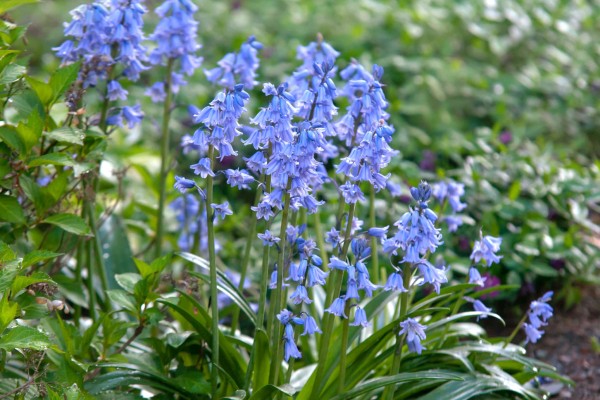
Symptoms of Bluebell poisoning in dogs:
Every pup reacts differently to toxins, from ingestion of any part of the plant or drinking water from a vase containing bluebells. The signs of poisoning can include vomiting, diarrhea, stomach pain, increased heart rate, seizure, and collapse. If you notice any of these symptoms, you must take them to an emergency vet immediately.
Daffodils
Daffodils are bright, trumpet-shaped flowers, usually with white or yellow petals and a very striking orange-colored center. Similarly, these bright blooms are complemented by long, flat leaves. It appears from March to late April. During this period, be especially cautious during dog walks, as daffodils contain a toxic substance called lycorine, which is toxic for them. The bulb of the daffodil is the most poisonous part of the plant.
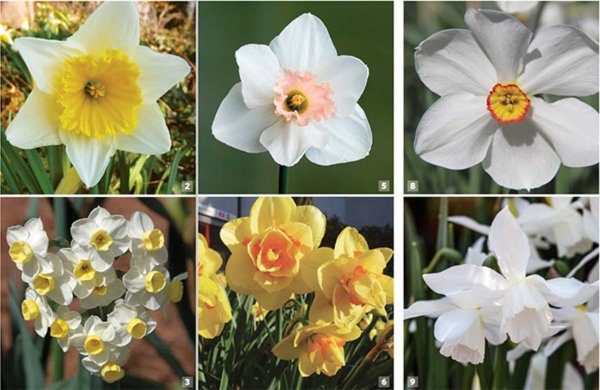
Symptoms of Daffodils poisoning in dogs:
Ingestion of the bulb or any other part may cause vomiting, diarrhea, altered heart rhythm, and breathing difficulties. Also, a daffodil flower may cause skin irritation and mouth and throat irritation if ingested. So, keep your dogs away from these plants or avoid planting these flowers in your garden.
Sago Palm
Sago Palm is known to be a highly toxic houseplant as it belongs to the cycad family. It features a shaggy bark and glossy green fronds that grow in a circular pattern. They can reach up to six feet in height and shed a large, round, orange seed. Sago Palm produces several toxins including Cycasin. Cysasin is found in every single part of the plant. It causes gastrointestinal signs and liver damage that leads to liver failure. Although all parts of the sago palm are toxic, the seeds are considered to be the most toxic.

Symptoms of Sago Palm poisoning in dogs:
This plant is toxic to all pets and can lead to severe health issues like vomiting, diarrhea, liver failure, seizures, and yellowing of the skin. In severe cases, it can be fatal as well. and could even lead to death. The signs and symptoms of poisoning may appear as quickly as 15 minutes after ingestion, although in some cases, they do not appear for several hours.
Asparagus fern
Asparagus fern, also, known as emerald feather and lace fern, is toxic to both dogs and cats. It is a decorative plant with dense, fern-like leaves. It can be grown outdoors in warm climates or used indoors as an ornamental. Despite its name, it’s related to the asparagus family, not a true fern. In spring, it also produces small white flowers and red berries. The plant contains sapogenin, a steroid that can cause harm. If a pet eats the berries, it may experience vomiting, diarrhea, and abdominal pain.
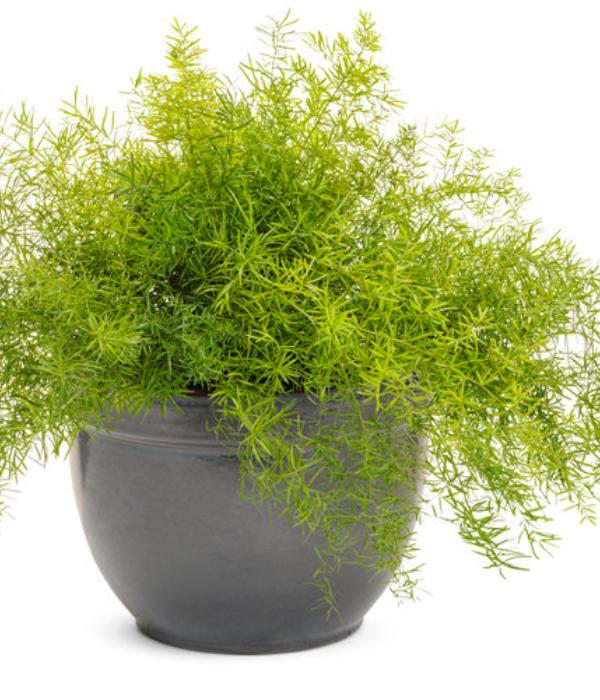
Symptoms of Asparagus fern poisoning in dogs:
If Asparagus fern is ingested by pets, it can cause significant gastrointestinal issues such as vomiting and diarrhea. Additionally, prolonged contact with the plant can lead to skin irritation in dogs. The toxic steroid in the asparagus fern is responsible for both the digestive distress and the skin reactions.
Oleander
Oleander is a beautiful ornamental shrub commonly seen in public gardens and private yards. Its lush and bushy foliage grows to a height of up to 12 feet. Similarly, it is covered with vibrant clusters of flowers in white, yellow, pink, and red. Recently, oleander has been cultivated as a hedge plant. However, it is important to know that the oleander plant is highly toxic to both humans and pets. Particularly, the leaves and flowers are extremely poisonous. Oleander contains cardiac glycosides that can lead to severe gastrointestinal neurological, and cardiovascular problems.
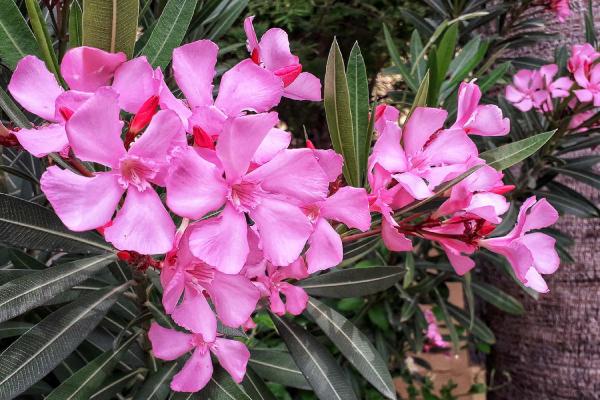
Symptoms of Olender poisoning in dogs:
If your dog eats oleander flowers or leaves, it can suffer from intense vomiting. The ingestion of leaves and flowers of the plant can also cause severe diarrhea and can have serious effects on the heart as well. In severe cases, it may even be fatal.
Hydrangea
Hydrangea is a genus of flowering plants that are highly poisonous to dogs. It is characterized by broad, flat green leaves and a large flower bunch that can come in a variety of colors including pink, red, blue, purple, and white. The plant contains toxic substances called carcinogenic glycosides. This toxic usually produces more of a gastrointestinal disturbance.

Symptoms of Hydrangea poisoning in dogs:
Ingesting Hydrangea by a dog can cause mild stomach issues and have several symptoms like tiredness, vomiting, and diarrhea. The leaves and flowers of hydrangeas contain the most significant amount of a chemical called amygdalin. If your dog ingests a large quantity of hydrangea, he can develop cyanide poisoning. When the dog chews up the plant, the amygdalin is changed inside the body into cyanide. Cyanide is harmful because it can block the ability of the body to use oxygen properly.
Ivy
Ivy is a climbing vine mostly used to cover fences and walls. Unfortunately, it is highly toxic to dogs. This plant contains saponins and polyacetylene compounds injurious to the animal. Its leaves are considered to be more Poisonous.
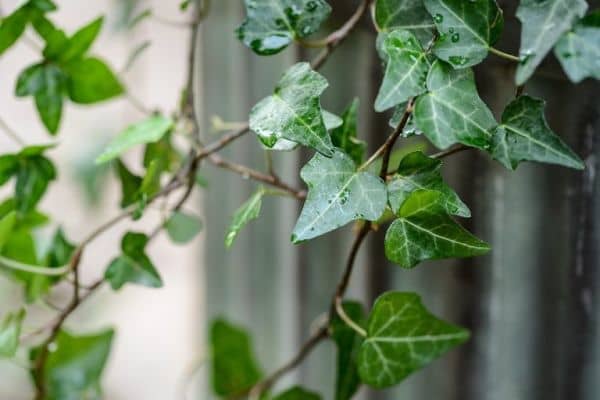
Symptoms of Ivy poisoning in dogs:
Poisoning from Ivy can cause stomach problems, irritation of the mouth, vomiting, and diarrhea. Also, skin irritation is seen in the contact area with reddening, swelling, and blistering.
Dumb Cane
Dumb Cane, or Dieffenbachia, is a hardy indoor plant with bright green leaves that thrives in warm temperatures and indirect sunlight. Despite its beauty, it is toxic if chewed or ingested. This plant contains harmful calcium oxalate crystals that can cause injury. All parts of the dumb cane, including the sap, are poisonous, so it’s important to keep your pet away from it.
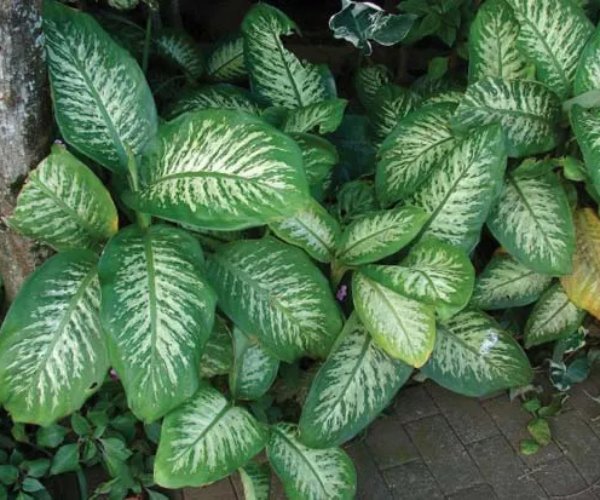
Symptoms of Dumb Cane poisoning in dogs:
Poisoning from a dumb cane can cause serious injury and swellings to the tongue, throat, and lips of dogs. In more severe cases, the toxic effects reach the eyes of the dog, which may further cause temporary or permanent blindness. Besides, the dogs may also experience severe breathing difficulties.
Japanese Yew
Japanese yew is an evergreen shrub to a tree with fleshy, needle-like leaves. Its leaves and pods are poisonous to dogs if ingested. The plant contains toxic chemicals called taxine alkaloids, which can seriously affect the heart. Additionally, the plant’s oil irritants can cause gastroenteritis.
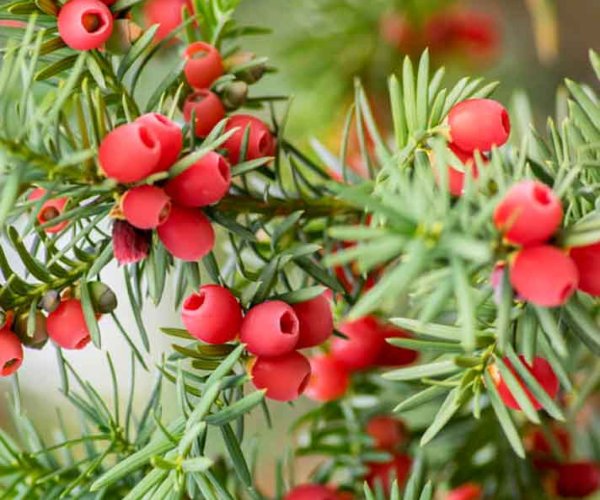
Symptoms of Japanese Yew poisoning in dogs:
Eating Japanese Yew can cause sudden death from heart failure. Dogs may show symptoms like shaking, trouble breathing, vomiting, and seizures. If you think your dog has eaten any part of the Japanese yew, take them to a vet right away.
Also read, What is Dipladenia? How to Grow and Care for This Plant!
Frequently Asked Questions
1. What plants are poisonous for dogs?
Plants that are poisonous for dogs include Rhododendrons, Bluebells, Daffodils, Japanese yew, Hydrangea, Ivy, and Dumb Cane.
2. What are the symptoms of poisoning in a dog?
Symptoms of poisoning can vary depending on the plant but commonly include vomiting, diarrhea, abdominal pain, seizures, and increased heart rate.
3. Why Oleander is dangerous for dogs?
Oleander contains harmful chemicals called cardiac glycosides, which can cause serious health issues for dogs.
